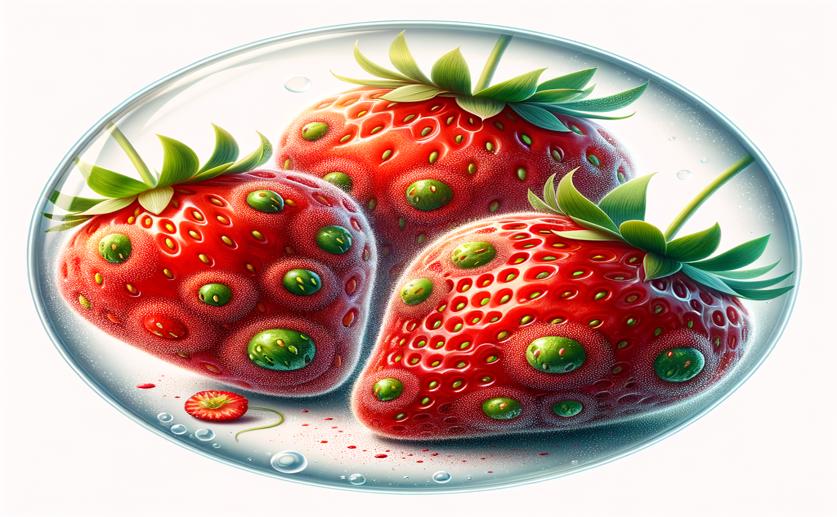
New Protective Film Keeps Strawberries Fresh by Killing Harmful Fungi
Jenn Hoskins
31st July, 2024

Image Source: Natural Science News, 2024
Key Findings
- A study from Jilin University found that Monarda didyma essential oil (MEO) and its nanoemulsion can effectively inhibit fungal pathogens causing strawberry decay
- Thymol, a key component of MEO, disrupts fungal cell walls, leading to the collapse of mitochondrial membrane potential and a burst of reactive oxygen species, effectively inhibiting the fungi
- A thymol-HEO-chitosan film was developed, reducing strawberry disease index by 90% and weight loss rate by 60%, while preserving nutritional quality, offering a promising commercial solution
References
Main Study
1) A Novel Preservative Film with a Pleated Surface Structure and Dual Bioactivity Properties for Application in Strawberry Preservation due to Its Efficient Apoptosis of Pathogenic Fungal Cells.
Published 30th July, 2024
https://doi.org/10.1021/acs.jafc.4c04579
Related Studies
2) Role of Nitric Oxide in Postharvest Senescence of Fruits.
3) Delay of Postharvest Browning in Litchi Fruit by Melatonin via the Enhancing of Antioxidative Processes and Oxidation Repair.
4) A tailored slow-release film with synergistic antibacterial and antioxidant activities for ultra-persistent preservation of perishable products.



 9th June, 2024 | Greg Howard
9th June, 2024 | Greg Howard